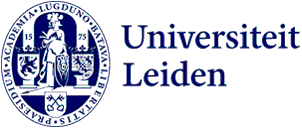
Two ERC Consolidator Grants for Leiden researchers
Two Leiden researchers have been awarded a Consolidator Grant by the European Research Council (ERC). This grant of up to 2 million euros will enable them to continue and develop their research.
The ERC Consolidator Grant is awarded to promising researchers with seven to twelve years of post-doctoral experience. They can use the grant of up to 2 million euros to fund a team of co-researchers and support staff over a five-year period.
Matthew Canfield – Leiden Law School, Institute for the Interdisciplinary Study of the Law
Matthew Canfield has received an ERC Consolidator Grant for his project Data Governance for Equitable and Sustainable Digital Food Systems (DIGIFOOD). This project will research how data from digital tools such as apps for mobile phones and drones is governed in agriculture. With these technologies gaining traction worldwide, they offer great opportunities to address food security and promote sustainability. However, without good governance the data collected with digital tools could actually increase inequity in food systems.
DIGIFOOD will explore emerging norms and practices in agricultural data governance in a transnational and comparative study of Kenya, India and Colombia – three countries in the vanguard of agricultural digitalisation in the Southern hemisphere. This groundbreaking study will contribute to a human-rights-based approach and will develop empirical methodologies for the study of law and digital technology.
David Holmes – Faculty of Science, Mathematical Institute
The EAGL project connects two areas of mathematics: counting geometric objects (enumerative geometry) and finding whole-number solutions to equations (number theory). Enumerative geometry can involve determining how many circles touch other circles or solving problems relating to theoretical physics. In number theory, problems can include proving there are no whole-number solutions to certain equations. EAGL focuses on a single geometric object that bridges these fields. This can help to count curves in complex spaces and find whole-number solutions to symmetrical equations. This approach transfers techniques between these worlds, unlocking new insights.
